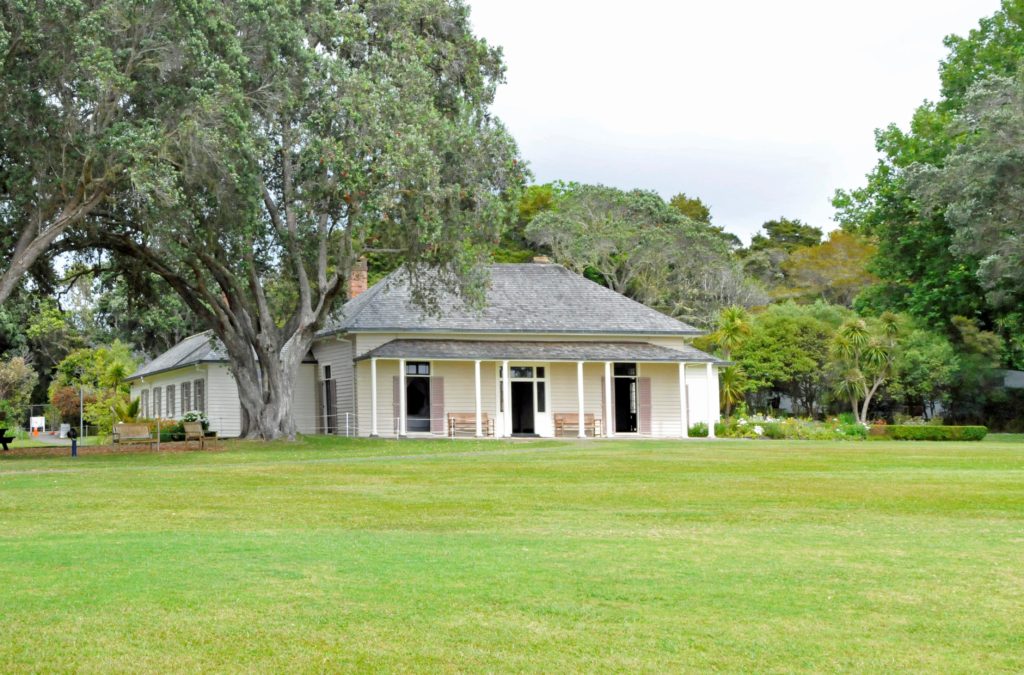
The Treaty House in Waitangi, New Zealand, is the country’s most important historical structure, even though it was imported from Australia. Documents still important to the country’s original people were signed there.
In about 1300 A.D., Polynesian seafarers first settled in what is now New Zealand. When Europeans arrived, descendants of these original settlers had divided into not-always-cooperative tribes, collectively known as the Māoris. 1833, England dispatched James Busby to the Bay of Islands to represent British interests in the international trading activities that had developed around a port in the area. Busby soon learned that the Māoris were being precluded from participating in this lucrative business because their ships did not fly a recognized flag. In 1834, Busby invited 25 Māori chiefs from the North Island to his small frame residence, fabricated in Australia and shipped in sections to the port. The chiefs selected a flag comprising a cross and four stars on a blue field. Busby then drafted a hand-written document recognizing The United Tribes of New Zealand as an independent state, authorized to fly the new flag. On October 28, 1835, 34 Māori chiefs signed what became known as the Declaration of Independence on the grounds of Busby’s house. In 1840, Busby brought the tribal chiefs back to his house, where, as leaders of The United Tribes of New Zealand, they signed the Treaty of Waitangi, establishing New Zealand as an English colony and granting perpetual rights to the Māoris.
The Treaty House has been restored to its original condition and includes a museum describing the events that took place in and around the house. The flag of the United Tribes of New Zealand flies from a flagstaff on the grounds, erected where the historic documents were signed, accompanied by the Union Jack and the flag of New Zealand.